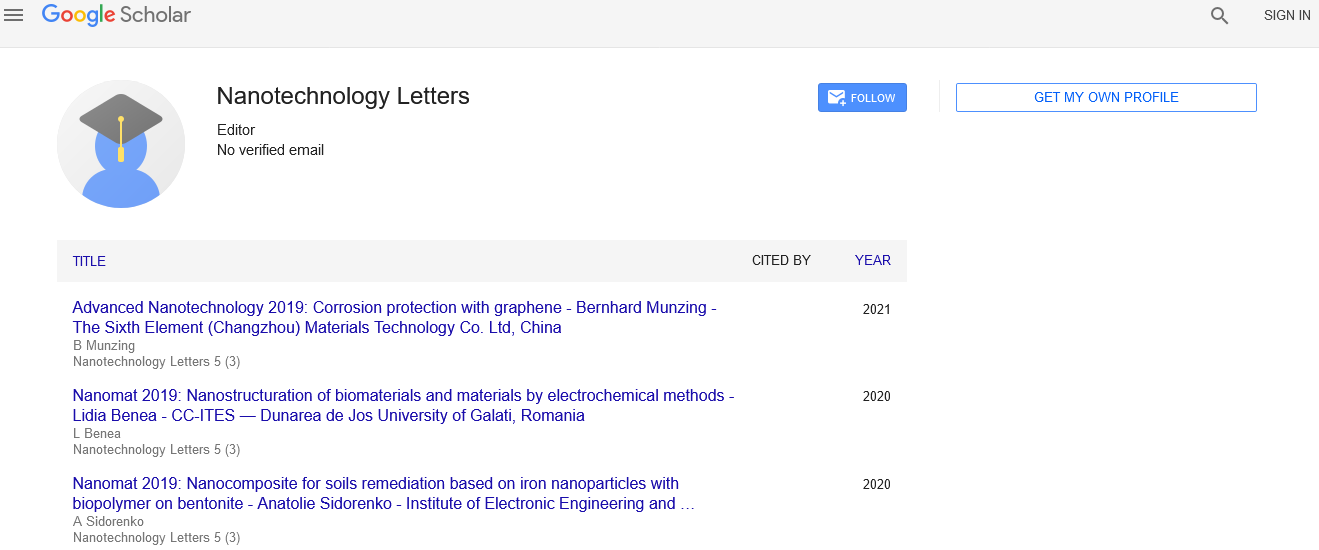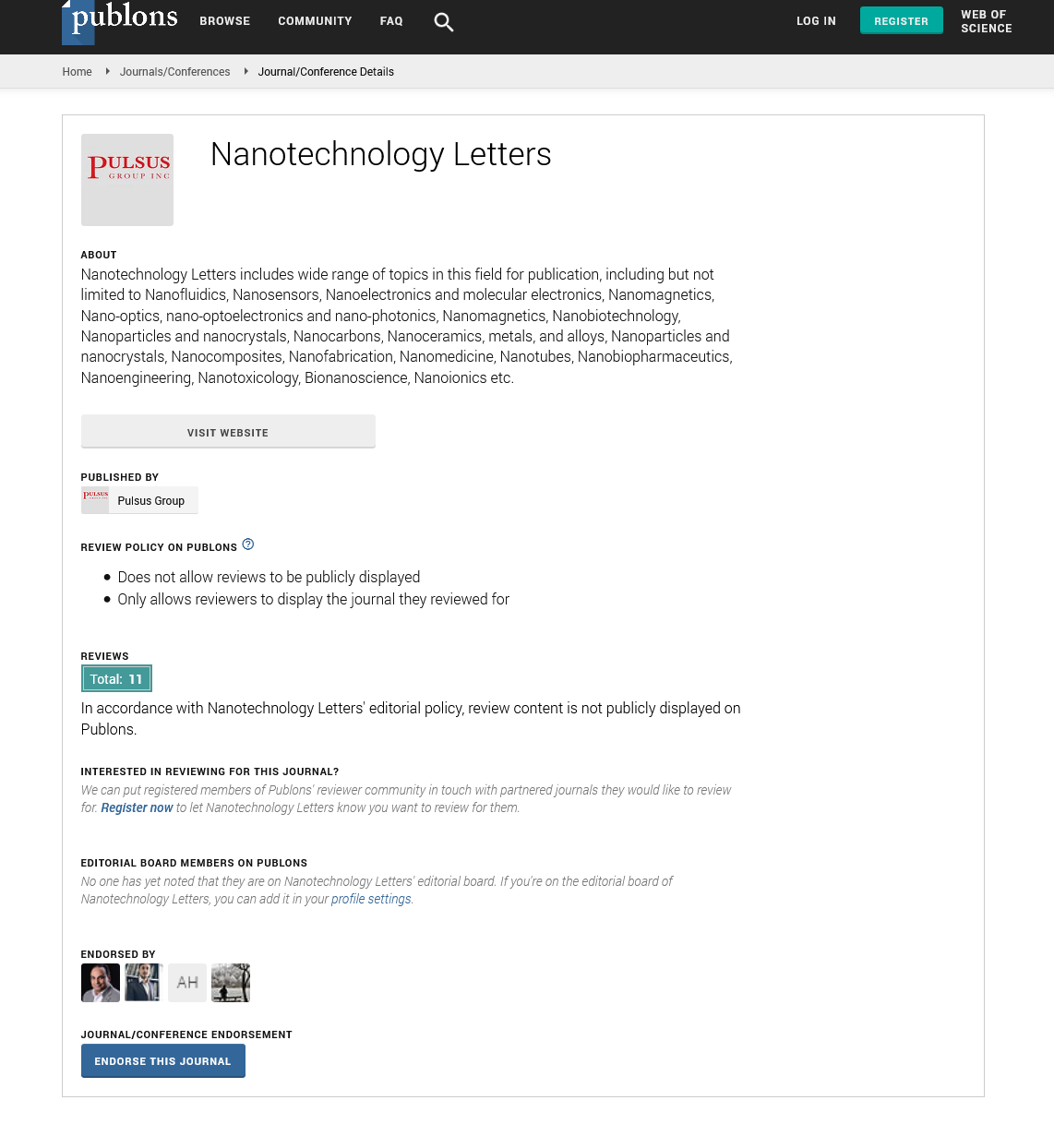Hierarchical layered double hydroxide nanocomposites for drug and siRNA delivery
Received: 04-Jan-2022, Manuscript No. pulnl-22-29501; Editor assigned: 07-Jan-2022, Pre QC No. pulnl-22-2951 (PQ); Accepted Date: Jan 27, 2022; Reviewed: 22-Jan-2022 QC No. pulnl-22-29501 (Q); Revised: 25-Jan-2022, Manuscript No. pulnl-22-29501 (R); Published: 28-Jan-2022, DOI: 10.37532. pulnl-22-2951
Citation: Australian Institute for Bioengineering and Nanotechnology, University of Queensland, Australia
This open-access article is distributed under the terms of the Creative Commons Attribution Non-Commercial License (CC BY-NC) (http://creativecommons.org/licenses/by-nc/4.0/), which permits reuse, distribution and reproduction of the article, provided that the original work is properly cited and the reuse is restricted to noncommercial purposes. For commercial reuse, contact reprints@pulsus.com
Abstact
Chemotherapy is one of most common cancer treatments in clinics. In most cases, the clinical responses show that the efficacy of chemotherapy is limited by the development of multidrug resistance (MDR) in cancer cells during a long period of treatment. Target-specific delivery and sustained release of anticancer agents and siRNA has attracted considerable research interest in cancer chemotherapy. It is clear that the single treatment by either anticancer drug or siRNA delivered by nanocarriers can only achieve limited success in overcoming the MDR of cancer cells. Thus, the development of an effective strategy to overcome the multidrug resistance in chemotherapy remains a major challenge in the treatment of cancers, where codelivery of anticancer drugs and siRNA would be a promising strategy. Recently, hierarchical nanocomposites have attracted great interests in bioapplications such as drug delivery, biomedical imaging, biochemical sensing and biocatalysts owing to their structure features and unique properties.1 In our group, we have developed hierarchical SiO2@MgAl-layered double hydroxide nanocomposites (SiO2@MgAl-LDH) with various functional groups (-NH2, -SH, -PEG) via nanodot-coating strategy. These nanocomposites have showed enhanced siRNA and drug delivery to cancer cells. The functional SiO2@MgAlLDH nanocomposites retained the layered structure and platelike morphology as MgAl-LDH NPs. Moreover, functional SiO2@MgAl-LDH showed good dispersion in aqueous solution and cell culture medium. The in vitro tests have demonstrated anticancer drugs or siRNA delivered by functional SiO2@MgAl-LDH apparently inhibited the cancer cell growth
Biography
Dr Li Li is an Advance Queensland Research Fellow (Mid) at Australian Institute for Bioengineering and Nanotechnology, University of Queensland. She is a materials scientist with extensive experience in nanoparticle synthesis and applications in targeted drug delivery and vaccination. She has developed several functional NPs platforms including layered double hydroxides (LDHs), silica NPs and nanoemulsions, and applied these NPs to efficiently deliver anti-cancer drugs and siRNA for cancer treatment. She has employed LDH-based nanoparticles to co-deliver drugs and gene to improve drug efficiency in cancer treatment. This new strategy provides a promising approach for advance cancer therapy.
REFERENCES
- Cao P, Han FY, Grøndahl L, et al. Enhanced oral vaccine efficacy of polysaccharide-coated calcium phosphate nanoparticles. ACS omega. 2020 17;5(29):18185-97.
Google Scholar Crossref - Liu J, Wu Y, Fu C, et al. Charge reversion simultaneously enhances tumor accumulation and cell uptake of layered double hydroxide nanohybrids for effective imaging and therapy. Small. 2020 ;16(31):2002115.
Google Scholar Crossref - Liu J, Li L, Zhang R, Xu ZP. Development of CaP nanocomposites as photothermal actuators for doxorubicin delivery to enhance breast cancer treatment. J Mater Sci Technol. 2021 10;63:73-80.
Google Scholar Crossref - Cao Z, Li B, Sun L, et al. Targeted drug delivery: 2D layered double hydroxide nanoparticles: recent progress toward preclinical/clinical nanomedicine (small methods 2/2020). Small Methods. 2020 ;4(2):2070008.
Google Scholar Crossref






